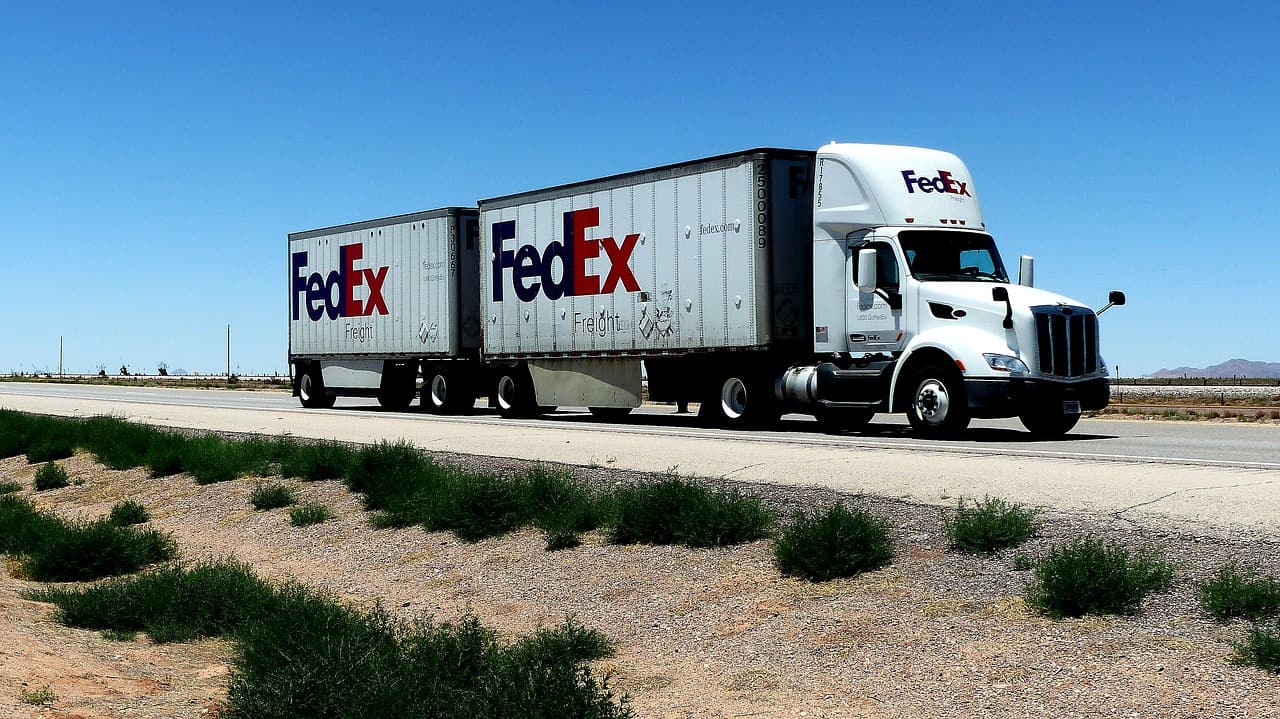Businesses rely on truck drivers to deliver equipment, products and other resources. Company owners have several ways to ship their goods. Knowing the difference between full truckload (FTL) and less-than-truckload (LTL) shipments can help you save money and maximize efficiency. These terms may seem complicated at first glance, but this article will help make them easy to grasp while presenting the pros and cons of each shipping method.
What Is a Full Truckload?
A full truckload is a popular choice for companies that make large shipments. A full truckload is when a company’s goods take up the entire trailer. They do not share any part of the trailer’s storage with other companies.
You can receive the same goods through multiple LTL shipments, but full truckload shipments increase efficiency and lower costs. When the FTL truck arrives at your company, you know your cargo has arrived. Full truckload shipments are best for companies that can fill the entire truck. If you have significant space left in the truck, you may want to go the LTL route instead.
What Is Less Than Truckload?
A less-than-truckload shipping solution allocates some space in a trailer for your shipment. Your company shares space in the truck with other companies. The truck will make multiple stops before arriving at your company’s headquarters. This method is less efficient but will save money if you have fewer goods.
The U.S. Postal Service (USPS) is the best example of a less-than-truckload business model. USPS drivers visit numerous houses and drop off the mail before arriving at your home. You would receive mail sooner if your USPS driver’s truck only contained your mail, but the USPS would have you incur all of the expenses instead of splitting them across the country through taxpayer money.
Comparing Full Truckload vs. Less-Than-Truckload Shipping
Full truckload and less-than-truckload shipping solutions cater to different businesses. Understanding the strengths and weaknesses of each shipping method will help you determine which one is right for you. Before browsing through a load board to find truckers for your freight, keep these considerations in mind when comparing FTL to LTL.
Size of Business
It’s important to know how many pallets you need for your cargo before making a decision. Full truckload freight consists of 24 to 30 pallets, with some trucks offering even greater capacity. Large companies with enough freight to cover that gap multiple times per week should use a full truckload shipping solution.
A less-than-truckload shipping solution works better for small companies because it could take a month of business activity to accumulate 24 to 30 pallets of freight. Few companies can wait over a month between shipments without slowing down production and losing customers. Less than truckload shipping costs less per shipment for small businesses in this situation and allows you to consistently receive cargo.
Large companies will benefit from full truckload freight, while smaller companies will benefit from less-than-truckload shipping.
Delivery Speed
A full truckload shipping solution does not make any stops on the way to its destination. All of the freight in these trucks belongs to your company. Business owners can expect to receive their cargo a few days earlier with full truckload shipping.
Less-than-truckload shipments will take longer to arrive. LTL trucks make multiple stops on the way to their destinations. These trucks carry freight for various companies. It will take time for these trucks to load and unload freight for each customer on the way to your headquarters. Full truckload shipping solutions emerge as the clear winner for delivery speeds. Businesses that rely on less-than-truckload shipping solutions should make orders in advance and spread them out so they don’t get caught off guard by long delivery times.
Cost
It’s hard to establish a clear winner for costs when comparing truckload with less-than-truckload shipping solutions. Business owners should assess how many shipments they make each week and shipment sizes.
Less-than-truckload shipping costs less per shipment, but it’s cost-effective to combine several LTL shipments into a single FTL shipment. You will save money if you use FTL shipping and fill the truck. However, if you use FTL shipping solutions and only have enough freight to load onto a single pallet, you will pay for a lot of unused space. If you cannot fill an FTL truck, it’s probably not the best choice for your business.
But some companies have to opt for FTL shipping even if they cannot fill each pallet. Some goods perish quickly and have temperature requirements. An FTL truckload may be the only solution for some businesses, but some LTL truckloads have temperature adjustments, too. You can store your inventory on an LTL refrigerated truck if necessary. Dry vans will be sufficient for most business owners.
If you can wait for a full truckload freight shipment, the full truckload is the better choice. Smaller companies with less time to wait for a full truckload of freight will fare better with less-than-truckload shipping.
Risk
Human error plagues every industry. No one is perfect, but full truckload shipping minimizes the number of potential errors. A full truckload goes directly to your company, while LTL drivers make multiple stops on the way to your company.
Less-than-truckload drivers navigate across many states each day to ensure freight arrives on time. A driver may accidentally skip your location or drop off your freight in the wrong state. These mistakes will delay your shipment’s arrival. A driver or any of the receiving companies can make a mistake that needlessly extends the driver’s route.
Full truckload freight does not carry these risks. Companies receiving enough business each week should use full truckload shipping to minimize this risk.
Freight Class
Some freight, such as meat and pharmaceuticals, requires specific conditions to arrive at their destinations properly. Some less-than-truckload shipping solutions may offer refrigeration, but every customer would need the same refrigeration for this shipping solution to work for your business.
Full truckload freight gives companies greater control over the trailer’s conditions. They can request a refrigerated trailer with their requirements. They don’t have to partner with other businesses or look for a refrigerated less-than-truckload shipping solution.
Full truckload shipping solutions provide more control, a clear advantage for businesses that require specific temperatures and conditions for their freight. More control leads to fewer hassles, especially if your freight class isn’t suitable for a dry van.
Amount of Handling
Adding steps to the process will increase handling costs. Full truckloads allow drivers to take a direct path to your company’s headquarters, but LTL shipments have more steps. Drivers have to deliver freight at multiple locations. They have to stop driving for a few hours at each stop, which is a big deal for drivers paid by the mile. You will have to pay more per mile for an LTL shipment, but it’s better for businesses that cannot fill FTL trailers.
The handling continues when a driver arrives at a company’s headquarters. Workers may move your pallet out of the truck to reach for another pallet. This process lets the driver serve each business on their list. After the delivery, workers must put your company’s pallet back into the truck. This process will be repeated until the trucker reaches your company’s headquarters.
If your business receives enough shipments to justify full truckload shipping solutions, you should lean in that direction to reduce the amount of handling.
Get the Right Shipping for Your Business
Shipping solutions allow your business to receive cargo at critical times, but you should do everything in your power to minimize costs and increase efficiency. Now that you know the pros and cons of FTL and LTL shipments, it’s easier to make a decision that best serves your business. Smaller companies often start with LTL shipments and scale their way to FTL shipments over time.
FAQ
Less than truckload is when you share a trailer with other companies. Some of the freight in the truck trailer does not belong to your company.
A full truckload is 24 to 30 single-stacked pallets.
Most FTLs cannot carry more than 42,000 to 45,000 pounds. The FTL driver will need a special permit to carry more than 80,000 pounds of cargo.
Sign up for a FreightWaves e-newsletter to stay informed of all news and trends impacting supply chain careers and operations.


